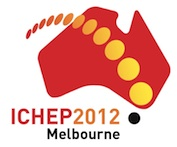Speaker
Prof.
Karol Lang
(University of Texas at Austin (US))
Description
The NEMO-3 experiment, designed to search for neutrinoless double beta decay, was carried out from 2003 to 2011 in the Modane Underground Laboratory in the Frejus Tunnel. The detector employed thin isotopic foils surrounded by a drift chamber and scintillator blocks to reconstruct topology, energy, and timing features of nuclear decays. This multi-observable technique offers a powerful means not only to identify double beta decays but also to reject background events mostly due to natural radioactivity. NEMO-3 employed seven different isotopes to construct foils, with most notable mass of Mo-100 of 6.9kg and Se-82 of 0.93kg. Data from the entire running period are currently being analyzed but NEMO-3 has already achieved the best-to-date results on half-lives of all seven isotopes and has reported lower limits on neutrinoless double beta half-lives which can be translated to the most stringent upper limit on the effective neutrino mass.
The next generation experiment, SuperNEMO, will employ the technique pioneered by NEMO-3 but will ultimately house about 100kg of an isotopic source distributed in 20 detector modules. SuperNEMO's goal is to reach half-life sensitivity of about 10^26 years and thus about 50meV for an upper limit for the effective neutrino mass. The collaboration has conducted an extensive R&D program to improve detector performance and lower backgrounds in the new detector and the construction of the first "demonstrator" module has commenced. The module will be commissioned in 2014 and remaining modules will be built later in the decade. The baseline choice for an isotope is Se-82 but this technique has flexibility to use any other source. The collaboration also considers Ca-48 and Nd-150 if sufficient amounts of these isotopes can be enriched, currently viewed as an extremely challenging task of its own.
Summary
NEMO-3 has already achieved the best-to-date results on neutrinoless double beta decay half-lives of seven isotopes and produces the most competitive constraints on the neutrino mass. Future analysis of all collected data will further improve these results.
Primary author
Prof.
Karol Lang
(University of Texas at Austin (US))




